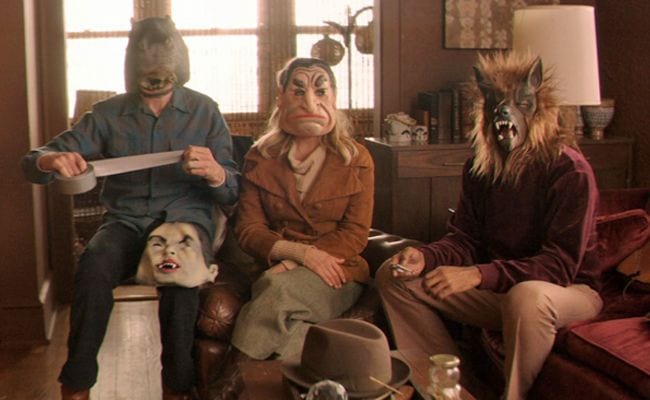
“Only a mediocre person is always at his best”, said English playwright W. Somerset Maugham. A quotation on the theme of mediocrity represents an ominous opening for any review, but as the credits roll to signal the conclusion of Daniel Schechter’s Life of Crime, the phrase “mediocrity void of ambition” comes to mind.
With respects to Maugham’s words, perhaps it is not only a mediocre person who is always at his best, but also a mediocre film as well — say, Life of Crime. One could waste her time on a kooky but dull tale of kidnapping and blackmail, or one could experience any number of films that aspire to a serve cinema by striving for excellence rather than simply playing it safe. To enjoy Life of Crime is to submit to ignorant bliss, and to the most adolescent desire of cinema: to entertain and expend time from one’s life.
Surely, we should ask more of cinema as an active audience? Film can be simple entertainment whilst striving to escape mediocrity; by contrast, the objective of Life of Crime relies on its source material and cast to offer the allure of a palatable filmic encounter. in the end, this caper is best described as a lethargic piece of filmmaking.
If judged within context of films of a similar nature, Life of Crime is a competent piece of filmmaking. Here one must revise Maugham’s thoughts on mediocrity: just as a mediocre person is always at his best, so too is the cinema of mediocrity.
A consideration that has often occupied my thoughts is whether or not there is a need for filmmakers to set out to create a game changer. Is there anything wrong with telling a familiar story well? Of course, the answer all depends on one’s point of view, but in an age where film history is, like Jennifer Aniston in Life of Crime, the wronged wife cheated on by her husband with his younger secretary, perhaps there is issue to be taken. Film is an interactive medium, whereby the spectator collaborates with the filmmaker. But the cinema we are being more readily exposed to in the present day are films which treat the audience as a latent object. These films, under whose description Life of Crime falls, attempt to offer nothing new other than to produce a new and worn flick full of stereotypical characters and actions so routine that one could be forgiven for thinking they can see into the future.
At least Steven Soderbergh and Quentin Tarantino infused their Elmore Leonard adaptations (Out of Sight and Jackie Brown, respectively) with a sense of enthusiasm; a visual energy that was apparent on the screen in those cases. Life of Crime makes an effort to entertain, although perhaps the exclusive emotion is to make us laugh, and perhaps sympathize with Jennifer Aniston’s ill-treated wife. The silliness is mostly centered on the ineptitude of the duo that blackmails Aniston’s character: her husband’s (Tim Robbins) ditzy mistress (Isla Fisher) and a white supremacist (Mark Boone Junior). At its heart, this is an indulgent plot that looks to absurdity to inject it with life. But when actors such as Tim Robbins and John Hawkes choose to go with the flow of their careers rather than seek out the kinds of characters who have afforded them the stature they have come to acquire, the mediocrity is difficult or impossible to escape for all involved.
Whilst one wastes their time on this plodding tale of kidnapping and blackmail, time could be more wisely spent experiencing the great cinematic works of filmmakers who were or are still servants to cinema. These films and the filmmakers define film as an art form of significant merit, which is capable of entertaining, but also touching our sensibilities and offering a way to engage with storytelling, ourselves and our world.
Here one can look to Andris Nelsons, the future music director of the Boston Symphony Orchestra, who said, “Music is food for our souls. We need to feed our soul and through music, through art, you can do this.” When I describe Life of Crime as fast food, it is not intended as a criticism in a totalizing sense. It is simply to say that, on one level, film and art are things we consume; however, they can also feed our souls, nourish us and impact our understanding of ourselves and our world.
Life of Crime opens up the discourse of film versus entertainment; or, to borrow the more popular distinction, “film versus cinema.” As a consumer product designed to deliver satisfaction, Life of Crime is a well-made and well performed film. The cast all offer adequate performances within a construct that is technically adequate. But as Doctor Oatman tells Martin Blank a.k.a the hit man who killed the president of Paraguay with a fork, the Duracell bunny has “no brain, it’s got no blood, it’s got no anima!” Much like the Duracell bunny, Life of Crime has no brain; it has no anima. It is a momentary encounter to neither be re-watched nor remembered. It is stagnant filmmaking in which the art form dies a small death for the business and the spectator’s one simple desire: hollow entertainment.
No extras were included on the review disc.


![Call for Papers: All Things Reconsidered [MUSIC] May-August 2024](https://www.popmatters.com/wp-content/uploads/2024/04/all-things-reconsidered-call-music-may-2024-720x380.jpg)



